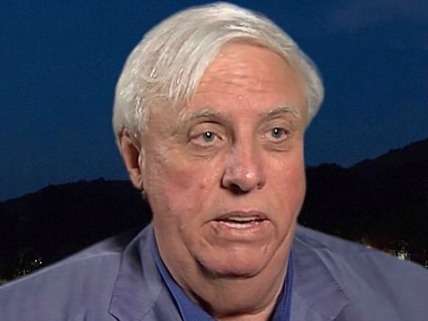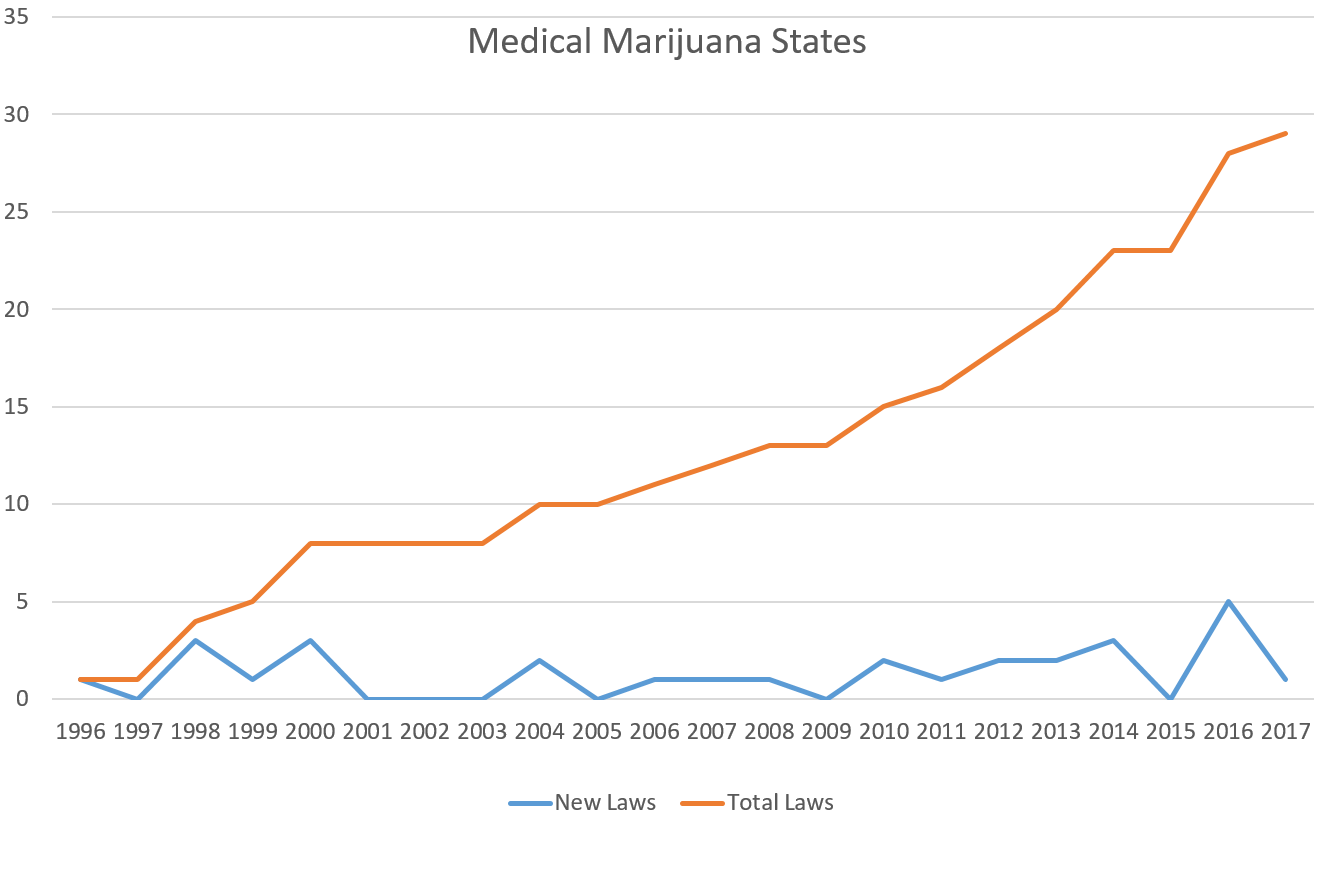West Virginia Becomes the 29th State to Allow Medical Marijuana Use
Six states have approved cannabis for patients in the last year.

Yesterday West Virginia Gov. Jim Justice signed a bill that makes his state the 29th to allow medical use of marijuana. West Virginia is the sixth state to legalize medical marijuana in the last year and the third (along with Ohio and Pennsylvania) to do so through the legislature. In the other three states—Arkansas, Florida, and North Dakota—voters approved ballot initiatives authorizing medical marijuana last November.
West Virginia's new law recognizes marijuana as a treatment for patients with terminal illnesses or any of 14 specified conditions, including cancer, HIV/AIDS, epilepsy, multiple sclerosis, Crohn's disease, post-traumatic stress disorder, and intractable pain. Patients whose doctors recommend marijuana will be able to obtain it in the form of pills, oils, gels, creams, ointments, tinctures, liquids, and vaporizable extracts from state-regulated dispensaries. The dispensaries will not sell buds for smoking or marijuana edibles, although patients can prepare their own at home. The law does not allow home cultivation, and patients can legally possess no more than a month's supply at a time.
"This legislation is going to benefit countless West Virginia patients and families for years to come," says Matt Simon of the Marijuana Policy Project (MPP), a West Virginia native. "Medical marijuana can be effective in treating a variety of debilitating conditions and symptoms. It is a proven pain reliever, and it is far less toxic and less addictive than a lot of prescription drugs. Providing patients with a safer alternative to opioids could turn out to be a godsend for this state."
One downside to West Virginia's law is a new standard for driving under the influence of marijuana that erroneously equates impairment with a blood THC level of three nanograms per milliliter. That's even lower than the unfair and unscientific five-nanogram cutoff that Colorado and Washington adopted when they legalized marijuana for recreational use. As MPP notes, West Virginia's DUID standard "could make it illegal for some patients to ever drive, since many patients have THC levels at this amount or greater many hours or days after last administering cannabis."
West Virginia's rules put it on the less liberal end of a medical marijuana spectrum that ranges from highly permissive (e.g., California) to highly restrictive (e.g., New York). Eight of the 29 medical marijuana states also allow recreational use. Medical use was approved by ballot initiative in 14 of those states, beginning with California in 1996. In the rest, as in West Virginia, medical marijuana laws originated in the state legislature.

Another 18 states have approved medical marijuana laws that MPP deems "ineffective because they are either unworkable or exceptionally restrictive." These laws allow use of specific cannabis products—typically low-THC, high-CBD extracts—and often do not provide a way to legally obtain them. But if you count those 18 states, MPP says, "only three states—Idaho, Indiana, and Kansas—have not approved any form of medical marijuana law."
Although the federal government still does not recognize any legitimate use for marijuana, surveys find strong popular support for letting patients have access to it. A Quinnipiac University Poll conducted in February and a Marist Poll conducted last month put support for medical marijuana at 93 percent and 83 percent, respectively. In both surveys, large majorities of both Republicans and Democrats favored medical access, as does President Trump. Even his attorney general, arch-prohibitionist Jeff Sessions, concedes that "dosages can be constructed in a way that might be beneficial."


Show Comments (19)